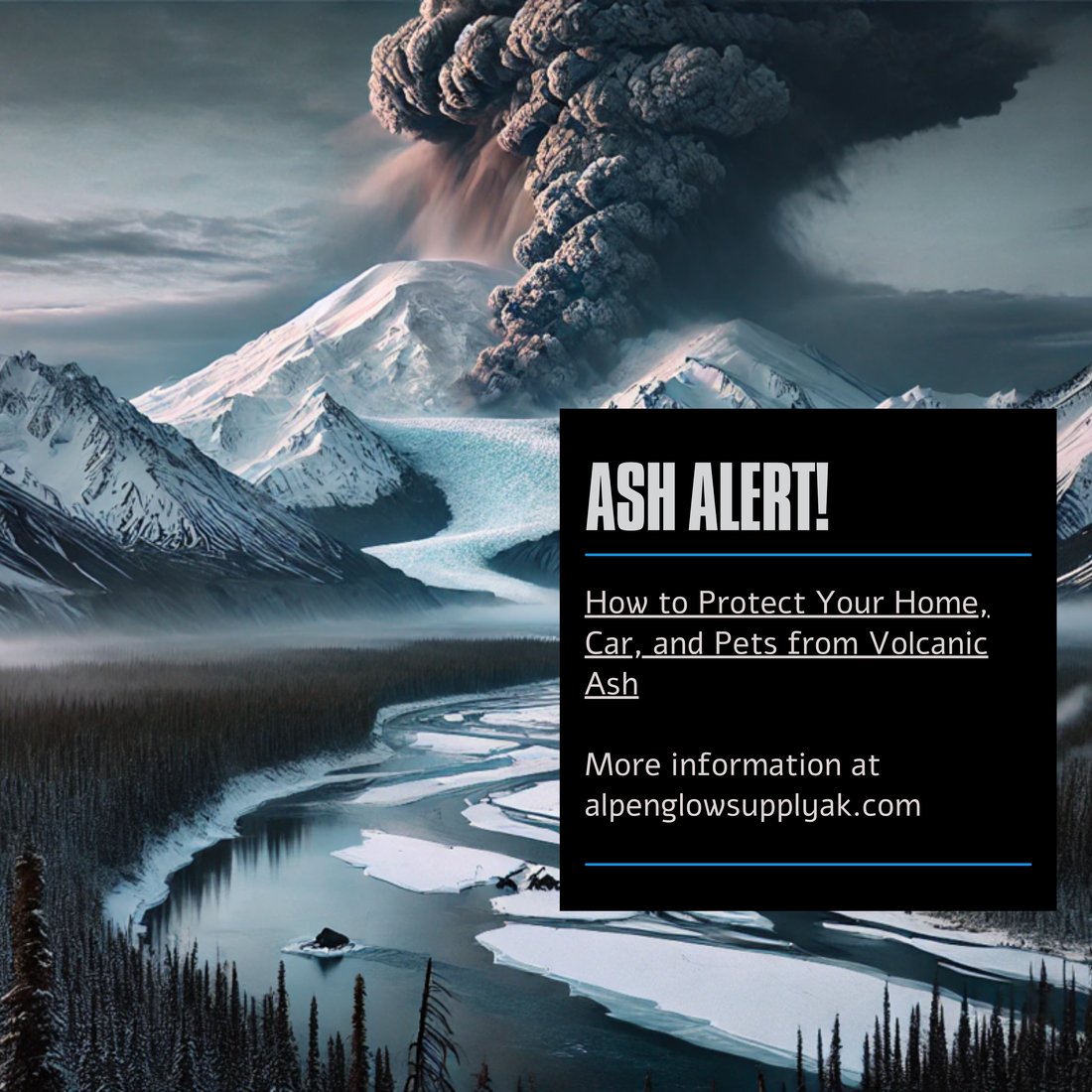
Ash Alert! How to Protect Your Home, Car, and Pets from Volcanic Ash
Share
When a volcano blows, volcanic dust can quickly change from an interesting thing to see to a big threat to how you are, where you live, what you drive, and even your loved pets. Even though volcanoes do not erupt often, it is very important to learn how to get ready for falling volcanic ash if you happen to live in an area where volcanoes are active.
Preparing Your Home
1. Stock Important Supplies:
- Make certain to have plenty of drinking water on hand (at a minimum of 4 liters for each person for each day for at least a week).
- Retain an adequate stockpile of non-perishable food supply.
- Secure a count of dust masks or respirators (rated N95 or higher), goggles, and disposable gloves.
2. Seal Your Home:
- Close and make sure all doors, windows, vents, and chimneys are secure so that ash doesn't get inside.
- Employ a number of damp towels or strips of tape to block all spaces around windows and doors.
3. Keep electronic items and machinery safe from harm:
- Use plastic or protective coverings to guard sensitive electronic equipment.
- Systematically clean ash deposits from solar panels, antennas, and outdoor equipment with some frequency with water—never wipe totally dry so scratches are prevented.
4. Air Quality:
- Establish air purifiers that have HEPA filters within typical living spaces.
- Refrain from using air conditioning as well as heating apparatuses that pull in air from the external environment, except if they are equipped with superior filtration technologies.
Preparing Your Vehicle
1. Keep Your Vehicle Completely Covered at all times:
- If you can, park your car inside of the garage, or put on a snug car cover or tarp over it.
2. Securely Keep the Engine and Air Filters Safe:
- Be certain to inspect and replace air filters on a regular basis, most notably after meaningful ashfall.
- Drive only when necessary because ash is rough and can badly damage your engine and car paint.
3. Emergency Kit:
- Keep a kit of ready supplies in your vehicle that includes masks, water bottles, first-aid items, safety glasses, and a blanket for emergencies.
Caring for Your Pets
1. Keep Pets Indoors:
- During volcanic ashfall, bring all of the pets indoors with haste immediately. Ash can bother the skin and eyes of many people. It can also irritate their respiratory systems.
2. Stock Pet Essentials:
- Retain a minimum of one week's worth of pet food, clean water, medication, and all required pet-care products.
3. Provide Protection:
- Think about buying pet goggles as well as masks made particularly to be suitable for animals if outdoor exposure is completely unavoidable for them.
- To eliminate ash residue, routinely wipe your animal's paws and coat using a moist towel.
Cleanup and Maintenance
- For cleaning ash off surfaces, use damp cloths and mops; sweeping dry ash should never be done, as this scatters particles in the air.
- Often, check as well as replace home along with car air filters after an ashfall event.
- Properly get rid of much of the volcanic ash by carefully gathering it in quite durable bags for appropriate disposal as directed by local authorities.
Being appropriately prepared for volcanic ashfall decreases stress levels and safeguards those you care about. It even protects your pets. If you recognize these protective measures and have the right materials available, you will be in a better situation to manage the dangers presented by volcanoes without risk and successfully.
Additional Resources:
- Anchorage Volcanic Ash Advisory Center https://www.weather.gov/vaac/
- Municipality of Anchorage |Volcanic Ash Preparedness https://www.muni.org/Departments/OEM/Prepared/pages/volcanicash.aspx
- Alaska Volcano Observatory https://avo.alaska.edu/volcano/
- Alaska Volcano Observatory | U.S. Geological Survey https://www.usgs.gov/observatories/avo
